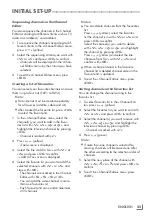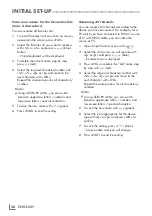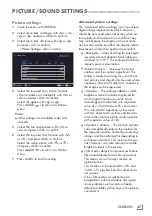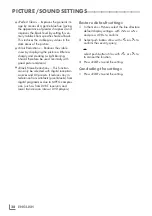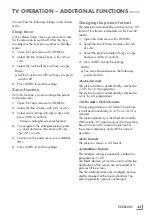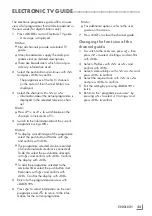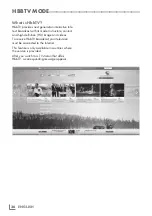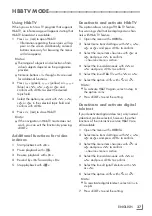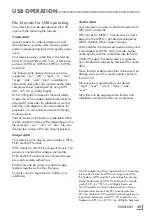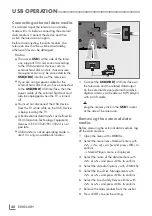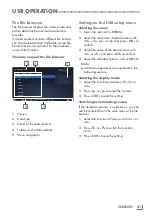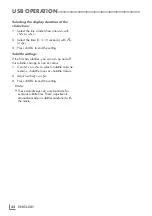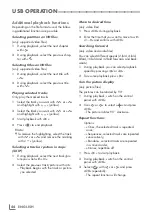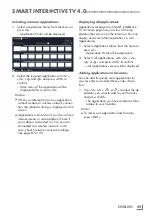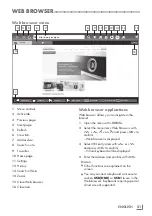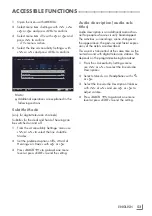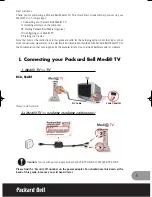
39
ENGLISH
USBOPERATION
--------------------------------------------------------------------------------------------
FileformatsforUSBoperating
Your television can be operated via the USB
input with the following file formats:
Videodata
Special codecs for video compression and
decompression provide more memory space
without compromising the picture quality exces-
sively.
Your television plays video files in the formats
XVID, H.264/MPEG-4 AVC (L4.1, 4 reference
pictures), MPEG-4, MPEG-2, MPEG-1, MJPEG
and MOV.
The following file name extensions are also
supported: “.avi”, “mkv”, “.mp4”, “.ts”, “.mov”,
“.mpg”, “.dat”, “.vob”,”.divx”. In addition to
video data, these files also contain audio data
compressed and "packaged" by using MP3,
AAC, DTS 2.0 or Dolby Digital.
DTS 2.0+Digital Out denotes the dual ability
to pass the DTS encoded digital bistream to an
external DTS decoder for playback as well as
fold down the digital surround soundtrack for
playback in a 2-channel environment through
analog outputs.
Format (codec) information is embedded within
the file content and may differ depending on the
file extension. “.avi”, “.mkv” or “.divx” files con-
taining divx codec within are not playbacked.
Imagedata
Your television can display picture data in JPEG,
PNG and BMP formats.
JPEG stands for Joint Picture Experts Group. This
process is intended to compress picture files.
PNG and BMP standards are intended to com-
press picture data without loss.
Picture files can be saved in a data storage
medium together with other file types.
Such files can be organized as folders and
subfolders.
Audiodata
Your television can play audio data coded with
MP3, AAC standards.
MP3 stands for MPEG-1 Volume Level 3 and is
based on the MPEG-1 standard developed by
MPEG (Motion Picture Expert Group).
AAC indicates the Advanced Audio Coding and
is developed by MPEG. AAC provides higher
audio quality with the same data rate (bit rate).
WMA (Windows Media Audio) is a compres-
sion standard developed by Microsoft for audio
data.
These formats enable audio files to be saved on
storage devices with a sound quality similar to
that of a CD.
File extensions supported by your device:
“.mp3”, “.mp2”, “.wma”, “.m4a”, “.aac”,
".wav"
MP3 files can be organised into folders and
subfolders similar to the files on a computer.
For DTS patents, see http://patents.dts.com. Manufac-
tured under license from DTS Licensing Limited. DTS,
the Symbol, & DTS and the Symbol together are reg-
istered trademarks and DTS
TruSurround
is a trade-
mark of DTS, Inc.
©
DTS, Inc. All Rights Reserved.
For DTS patents, see http://patents.dts.com. Manu-
factured under license from DTS Licensing Limited.
DTS, the Symbol, & DTS and the Symbol together are
registered trademarks, and DTS 2.0+Digital Out is a
trademark of DTS, Inc. © DTS, Inc. All Rights Reserved.

